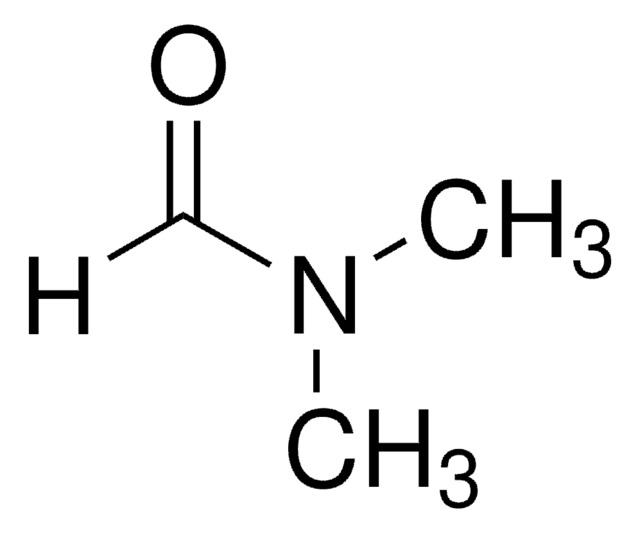675415
Acetonitrile
≥99.9%, HPLC Plus, suitable for HPLC, poly-coated bottles
Synonym(s):
ACN, Cyanomethane, Ethyl nitrile, Methyl cyanide
About This Item
Recommended Products
product name
Acetonitrile, HPLC Plus, ≥99.9%, poly-coated bottles
grade
HPLC Plus
Quality Level
vapor density
1.41 (vs air)
vapor pressure
72.8 mmHg ( 20 °C)
assay
≥99.9%
form
liquid
autoignition temp.
525 °F
973 °F
expl. lim.
16 %
technique(s)
HPLC: suitable
impurities
≤0.01% water
evapn. residue
≤0.0002%
color
colorless
refractive index
n20/D 1.344 (lit.)
bp
81-82 °C (lit.)
mp
−45 °C (lit.)
solubility
water: soluble
density
0.786 g/mL at 25 °C (lit.)
absorption
≤1 mAU at 210 nm
UV absorption
λ: 195 nm Amax: ≤0.10
λ: 200 nm Amax: ≤0.02
λ: 228 nm Amax: ≤0.005
application(s)
food and beverages
format
neat
SMILES string
CC#N
InChI
1S/C2H3N/c1-2-3/h1H3
InChI key
WEVYAHXRMPXWCK-UHFFFAOYSA-N
Looking for similar products? Visit Product Comparison Guide
Related Categories
General description
Application
- Anthocyanin Separation: Acetonitrile is employed in high-performance liquid chromatography (HPLC) for the selective separation of anthocyanins. Studies have demonstrated the benefits of replacing acetonitrile with methanol in the mobile phase to control the selectivity and improve the resolution of anthocyanin separation, providing a more sustainable approach to chromatographic analysis (Deineka et al., Journal of Analytical Chemistry, 2021).
- Detection of α-Amino Acids: Acetonitrile is used in the development of chemiluminescence methods for detecting α-amino acids. A mixed solution of water, acetonitrile, and ethyl acetate has been shown to enhance the sensitivity and accuracy of amino acid detection, making it a valuable tool for biochemical and clinical analyses (Kan et al., American Journal of Analytical Chemistry, 2020).
- Electrochemical Detection of Biomarkers: Acetonitrile is utilized in the electrochemical detection of biomarkers such as 5-formyluracil. Labeling with (2-benzimidazolyl) acetonitrile enhances the selectivity and sensitivity of the detection, making it an important method for biomedical research and diagnostics (Tang et al., Analytical Chemistry, 2021).
- Ligand-Assisted Excitation of Europium Complexes: Acetonitrile is used in studying the ligand-assisted excitation of Eu(III) complexes. The interaction of europium complexes with xenon difluoride in acetonitrile solution provides insights into their photophysical properties, which are essential for developing luminescent materials for various applications, including lighting and display technologies (Masyagutova et al., Journal of Fluorine Chemistry, 2024).
signalword
Danger
Hazard Classifications
Acute Tox. 4 Dermal - Acute Tox. 4 Inhalation - Acute Tox. 4 Oral - Eye Irrit. 2 - Flam. Liq. 2
Storage Class
3 - Flammable liquids
wgk_germany
WGK 2
flash_point_f
35.6 °F - closed cup
flash_point_c
2.0 °C - closed cup
ppe
Eyeshields, Faceshields, Gloves, type ABEK (EN14387) respirator filter
Choose from one of the most recent versions:
Certificates of Analysis (COA)
Sorry, we don't have COAs for this product available online at this time.
If you need assistance, please contact Customer Support.
Already Own This Product?
Find documentation for the products that you have recently purchased in the Document Library.
Customers Also Viewed
Chromatograms
application for HPLCOur team of scientists has experience in all areas of research including Life Science, Material Science, Chemical Synthesis, Chromatography, Analytical and many others.
Contact Technical Service







